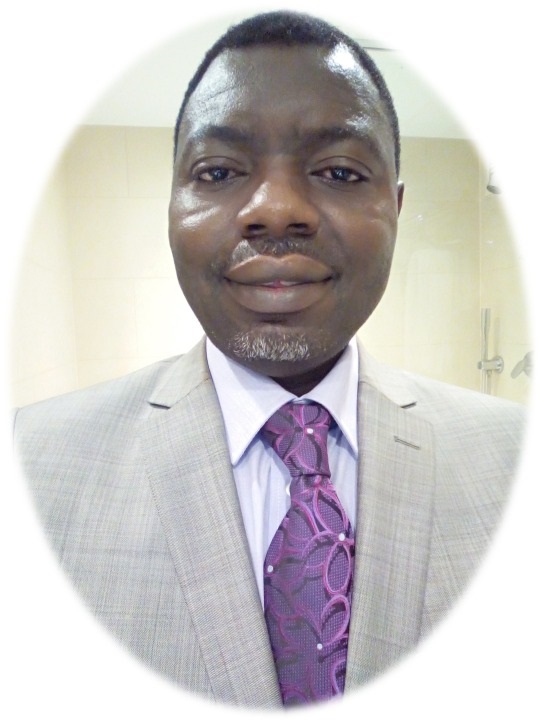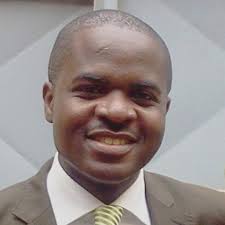Os odontoïdeum, cause rare de compression médullaire : à propos d’un cas
DOI :
https://doi.org/10.55715/jaim.v14i1.340Mots-clés :
os odontoideum, spinal cord compression, cervical spineRésumé
Os odontoideum is an anomaly of the second cervical vertebra (axis). This has as a correlate the spinal cord compression into the occipito-cervical spinal canal. It is a rare condition with an unknown exact prevalence. We reported the case of an 8-year-old patient presenting with quadriparesis for 9 months evolution. The diagnosis was made on a head CT scan and a MRI of the cervical spine.
RESUME
Os odontoïdeum (OO) est une anomalie de la deuxième vertèbre cervicale ou axis. Il a pour corollaire la compression médullaire dans le canal rachidien cervico occipital. C’est une affection rare, sa fréquence exacte est inconnue. Nous vous rapportons le cas d’une patiente de 8 ans avec une tétraparésie évoluant depuis 9 mois. Le diagnostic a été révélé lors de la réalisation d’un scanner cérébral compléter par une IRM du rachis cervical.
Téléchargements
Références
2. Dai L, Yuan W, Ni B, Jia L. Os odontoideum: etiology, diagnosis, and management. Surg Neurol. févr 2000;53(2):106‑8; discussion 108-109.
3. Fielding JW, Hensinger RN, Hawkins RJ. Os Odontoideum. J Bone Joint Surg Am. avr 1980;62(3):376‑83.
4. Sankar WN, Wills BPD, Dormans JP, Drummond DS. Os odontoideum revisited: the case for a multifactorial etiology. Spine (Phila Pa 1976). 20 avr 2006;31(9):979‑84.
5. Arvin B, Fournier-Gosselin M-P, Fehlings MG. Os odontoideum: etiology and surgical management. Neurosurgery. Oxford University Press; 2010;66 (suppl_3): A22‑31.
6. Perdikakis E, Skoulikaris N. The odontoid process: various configuration types in MR examinations. Eur Spine J. mai 2014;23(5):1077‑83.
7. Öğüt E, Şekerci R, Şen H, Çakın H, Gediz T, Keles-Celik N. Anatomo-radiological importance and the incidence of os odontoideum in Turkish subjects: a retrospective study. Surgical and Radiologic Anatomy [Internet]. 24 avr 2020 [cité 22 sept 2021]; Disponible sur: https://researcher-app.com/paper/4865591
8. Viswanathan A, Whitehead WE, Luerssen TG, Illner A, Jea A. « Orthotopic » ossiculum terminale persistens and atlantoaxial instability in a child less than 12 years of age: a case report and review of the literature. Cases J. 1 août 2009; 2:8530.
9. Menezes AH: Craniocervical developmental anatomy and its implications . ChNS. 2008, 24:1109onship to the congenital type of os odontoideum. Pediatr Radiol - Recherche Google [Internet]. [cité 23 sept 2021]. Disponible sur: https://www.google.com/search
10. Currarino G: Segmentation defect in the midodontoid process and its possible relationship to the congenital type of os odontoideum. Pediatr Radiol - Recherche Google [Internet]. [cité 23 sept 2021]. Disponible sur: https://www.google.com/search?
11. Schuler TC, Kurz L, Thompson DE, Zemenick G, Hensinger RN, Herkowitz HN. Natural history of os odontoideum. J Pediatr Orthop. avr 1991;11(2):222‑5.
12. Garg A, Gaikwad SB, Gupta V, Mishra NK, Kale SS, Singh J. Bipartite Atlas With Os Odontoideum: Case Report. Spine. janv 2004;29(2):E35‑8.
13. Stevens JM, Chong WK, Barber C, et al.: A new appraisal of abnormalities of the odontoid process associated with atlanto-axial subluxation and neurological disability. Brain. 1994 - Recherche Google [Internet]. [cité 23 sept 2021]. Disponible sur: https://www.google.com/
14. Wang S, Wang C: Acquired os odontoideum: a case report and literature review . ChNS. 2012, 28:315–319. 10.1007/s00381-011-1642-3 - Recherche Google [Internet]. [cité 23 sept 2021]. Disponible sur: https://www.google.com/
15. Klimo P, Kan P, Rao G, Apfelbaum R, Brockmeyer D. Os odontoideum: presentation, diagnosis, and treatment in a series of 78 patients. Journal of Neurosurgery: Spine. American Association of Neurological Surgeons; 2008;9 (4): 332‑42.
16. Spierings EL, Braakman R. The management of os odontoideum. Analysis of 37 cases. J Bone Joint Surg Br. 1982;64(4):422‑8.
17. Campbell E, Brown J. Case report of os odontoideum causing Ondine’s curse. British journal of neurosurgery. Taylor & Francis; 2013;27(6):836‑7.
18. Matsui H, Imada K, Tsuji H. Radiographic classification of os odontoideum and its clinical significance. Spine. LWW; 1997;22(15):1706‑9.
19. Gigante PR, Feldstein NA, Anderson RC. C1–2 instability from os odontoideum mimicking intramedullary spinal cord tumor: Report of 2 cases. Journal of Neurosurgery: Pediatrics. American Association of Neurological Surgeons; 2011;8(4):363‑6.
20. Watanabe M, Toyama Y, Fujimura Y. Atlantoaxial instability in os odontoideum with myelopathy. Spine. LWW; 1996;21(12):1435‑9.
21. Abe H, Tsuru M, Mitsumori K. Atlanto-axial dislocation–instability index and indications for surgery (author’s transl). No shinkei geka Neurological surgery. 1976;4(1):57‑72.
22. Chang H, Park JB, Kim KW, et al.: Retro-dental reactive lesions related to development of myelopathy in patients with atlantoaxial instability secondary to Os odontoideum. Spine. 2000, 25:2777–2783. - Google Search [Internet]. [cité 26 sept 2021]. Disponible sur: https://www.google.com/
23. Hughes TBJ, Richman JD, Rothfus WE. Diagnosis of Os Odontoideum Using Kinematic Magnetic Resonance Imaging: A Case Report. Spine. 1 avr 1999;24(7):715‑8.
Téléchargements
Publiée
Comment citer
Numéro
Rubrique
Licence
Formulaire droit d’auteur et de propriété du Journal Africain d’Imagerie Médicale
Je certifie / nous certifions que j'ai / nous avons suffisamment participé au contenu intellectuel, à la conception et design du travail, ou à l'analyse et à l'interprétation des données, ainsi qu'à la rédaction du manuscrit, pour en assumer publiquement la responsabilité ; et accepté que mon / notre nom figure sur la liste des auteurs dans l’ordre ci-dessous précisé. Je crois / nous croyons que le manuscrit représente un travail scientifiquement valide. Ni ce manuscrit, ni aucune partie substantielle de ce manuscrit n’a été publié ou envisage d’être publié ailleurs.
Je certifie / nous certifions que les résultats de ce manuscrit relèvent de nos propres données collectées au cours de l'étude. Nous attestons que, si les éditeurs le demandent, nous fournirons les données / informations ou coopérerons sans réserve pour obtenir et fournir les données / informations sur lesquelles le manuscrit est basé, pour examen par les éditeurs ou leurs mandataires. Les intérêts financiers, directs ou indirects, qui existent ou pourraient être perçus comme tels par un ou les auteurs en relation avec le contenu de cet article ont été divulgués dans la déclaration d’intérêt, de même que les sources éventuelles de financement du projet.
Par la présente, je transfère / nous transférons tous les droits de propriété exclusivement au Journal Africain d’Imagerie Médicale du moment que l’article est publié par ce Journal. Le journal aura: le droit d'accorder la permission de republier l'article en totalité ou en partie, avec ou sans frais; le droit de produire des pré-impressions ou des réimpressions et de les traduire dans des langues autres, pour les vendre ou les distribuer librement; et le droit de republier l'article dans une collection d'articles sous tout autre format.
Nous donnons le droit à l’auteur correspondant d’apporter les modifications nécessaires à la demande de la revue, faisons notre la correspondance entre lui et la rédaction pour le compte de ce manuscrit, il agira en tant que garant du manuscrit pour nous.
Je certifie / nous certifions que toutes les personnes ayant apporté une contribution substantielle au travail sans être des auteurs, sont nommées dans les remerciements avec leur permission.







